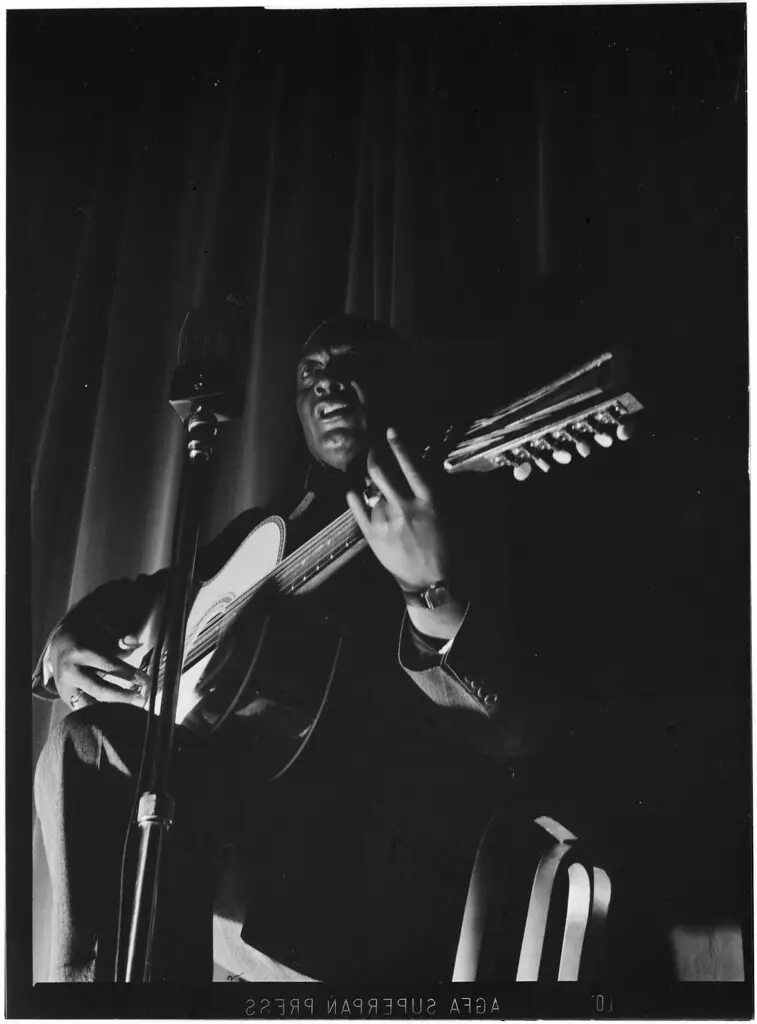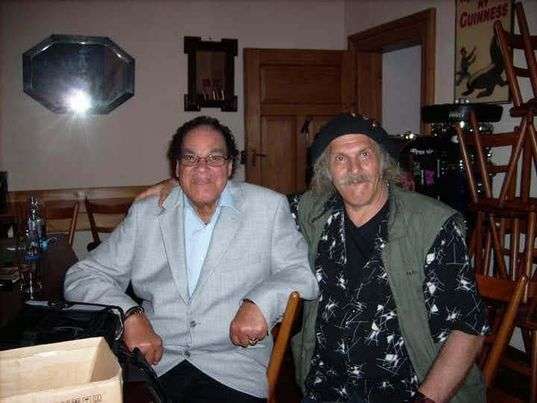Immersing oneself in the guitar work of a music legend like Leadbelly is both a captivating journey and a rewarding challenge. An enigmatic figure in the annals of blues and folk music, Leadbelly songs and their legacy thrives on his unique techniques and deeply personal interpretations. This exploration delves into his unconventional fingerpicking patterns, the use of alternate tunings, and the distinct resonance of his slide guitar work, all elements that contribute to his distinctive sound. Additionally, appreciating Leadbelly’s musical trajectory, his widespread influences, and the socio-political context of his era provides a profound understanding of his work and can significantly impact your interpretation of his music.
Learning Leadbelly’s Guitar Techniques
Title: Discovering Leadbelly: The Guitar Techniques that Defined a Legend

When we traverse the rustic roads of American folk and blues, one luminary stands tall in our collective memory – Huddie William Ledbetter, better known as Leadbelly. His raw talent, powerful voice, and dexterous guitar work encapsulated a poignant era of American music history uniquely. His legacy is etched firmly in his signature guitar techniques, which enriched icons from Bob Dylan to Kurt Cobain.
Let’s delve deeper into the essence of Leadbelly’s guitar techniques, to trace their influence on American music history.
1. 12-String Mastery
Leadbelly’s charm lies in his impeccable mastery over the 12-string guitar. His use of the guitar as a rhythmic instrument brought out pulsating beats, creating a powerful, full-bodied sound. Infusing the melodies with his percussive touch, the strumming became as much a part of the song as his evocative lyrics.
2. The Sliding Technique
The hallmark of Leadbelly’s guitar technique was his utilization of the slide, often composed of a steel tube or a glass bottleneck. By placing the slide on the strings and sliding it up and down, he could create an eerie yet riveting glissando effect, as heard in tracks like “Goodnight Irene.”
3. Folk Fingerpicking
Leadbelly’s interpretation of the blues set him apart, thanks to his adept use of the fingerpicking technique. His fingers danced on the strings, plucking intricate patterns that added depth and complexity to his music. The fingerpicking melody line enhanced the storytelling feature of his songs, drawing listeners into a poignant narrative.
4. Open Tuning
In a bid to transcend musical boundaries, Leadbelly often employed open G and open D tuning. These tunings resonated with a significantly different tonality that opened up fascinating melodic possibilities. The song “The Gallis Pole” showcases his proficiency in open tuning, highlighting the haunting resonance unique to this technique.
5. Fretboard Techniques
Leadbelly’s dexterity with the fretboard was evident in the fluidity and speed of his chord changes. His deft use of hammer-on and pull-off techniques produced a sharp, distinct sound punctuating his melodic phrasing, creating a gripping dialogue between lyrics and melody.
Irrefutably, Leadbelly’s guitar techniques embody the lifeblood of American folk-blues, coursing through the veins of modern music genres. However, it’s not merely the techniques that shaped his resonating sound but how he intricately wove them into his storytelling. The legend of Leadbelly serves as a lasting testament to the enduring power of music – to cross boundaries, to provoke thought, and to unite souls.
Understanding Leadbelly’s Musical Style and History
The Soulful Voice of the South: Exploring Leadbelly’s Foundational Influence
The sound of Leadbelly’s music is a vivid heartbeat echoing from the very soul of the American South. His distinctive guitar approach fuses raw energy, technical prowess, and an unparalleled soulful style that’s left a remarkable impression in the annals of music history. Paced by his unique life experiences, a deep dive into Leadbelly’s eclectic background only enriches the appreciation for his craft and lends an intriguing view into how his personal narrative shaped his guitar songs.
Born Huddie William Ledbetter, Leadbelly’s life was shadowed by hardships, from a harsh upbringing to penitentiary stints, which unmistakably colored his music. The authentic emotion of his melodies, honed by the rhythm of his oscillating life experiences, emanates from every strum and chord. His lyrics tell stories – painful and real, reflective of the artist’s challenging experiences steeped in the South’s racial polarities and socio-economic struggles. The profound emotion inherent in his music paints a vivid and compelling soundscape that cannot be extricated from his roots.
Leadbelly’s music found its cradle in the fertile soil of poverty and adversity. Raw yet refined, his style reflects the soul of the South, blending elements of blues, folk, gospel, and the work songs of his youth. His guitar compositions dance between these genres, defying classification, continuously evolving into something uniquely Leadbelly. The visceral nature of his music, laced with diverse musical elements, stands testament to his creative prowess and musical adaptability.
Influenced by his encounters in the Deep South, the prison songs Leadbelly interpreted ingrained a profound sense of authenticity into his music. He tuned the hunger for freedom, the longing for familiar comforts, and the despair of oppressive circumstances into relatable, poignant anthems. His music became a memoir of American dispossessions, giving unprecedented importance to the marginal voices, evident from his stirring renditions like “Midnight Special” or “Bourgeois Blues.”
His knowledge and interpretation of spirituals played a seminal role in shaping the narrative depth of his songs. Leadbelly often infused gospel motifs into both his songwriting and guitar techniques. It allowed him not just to vocalize societal critiques but also to hook listeners with the allure of familiar spiritual sounds, showcasing the draw and intimacy of his musical expanse.
Leadbelly’s guitar technique points towards an assimilation of various musical strands, yielding an organic blend of American folk traditions and blues. In doing so, this cultural icon forged a unique guitar language, showcasing incredible diversity within a single instrumental voicing.
Recognizing Leadbelly’s contribution to the music world isn’t purely deterministic; it thrives in understanding the roots that bore his sound. By delving into his background, his trials, and the musical traditions that throbbed around him, one begins to grasp the profundity of his narrative and the intensity of his musical expressions. A truly pioneering spirit, Leadbelly remains a timeless embodiment of authentic American folk music. His legacy continues to inspire, his songs remain a testament to the range of experiences that life can offer, and his guitar continues to strum the profound melody of resilience.
Transcribing and Practicing Leadbelly’s Songs
There lies an aura of excitement as we delve further into the exquisite world of Leadbelly’s music. A journey that will take us along the vibrant path of resonance and rhythm, basking in the poignant narrative of his works. So, prepare and fine-tune your guitars, for the exploration beckons.
As you navigate through the ardent melodies of Leadbelly’s music, there’s a keen emphasis on his distinct rhythmic patterns. It’s a mesmerizing musical tapestry woven together intricately with a driving beat backboned by the guitar. So, it’s vital to pay close attention to subtleties in rhythm. Use a metronome to dissect and rein in the timing, graduating from slower to faster tempos as proficiency improves.
Next, allow ‘authenticity’ to paint your musical canvas. Leadbelly piqued interest with his unique alterations of classical music structure. Breaking away from the conventional, he allowed the refrains to differ and verses to wander in count. Echoing this approach will reflect the soulful authenticity of his style during your practice session.
It’s also about surrendering to intuition. Leadbelly’s music ebbs and flows, resonating with the spontaneity of expression. Pay heed to this and allow the body to feel the rhythm, allowing instinct to guide your fingers on the fretboard.
Building a musical repertoire that spans across genres was an undeniable forte of Leadbelly. His music trawls the depths of blues, charges with the energy of folk, and lifts spirits with the cadence of gospel. Embark on this cross-genre journey, introducing versatile styles into your practice regime.
Furthermore, Leadbelly’s music encapsulated the profound emotive capacity of the guitar. The tale of his struggles and victories rang out through his songs, echoed in each pluck and strum of the strings. To authentically transcribe and practice these pieces, it’s important to echo this emotional connection through your performances as well, embodying the spirit and essence that marks Leadbelly’s music unique.
On parting notes, remember the invaluable role of persistence in grasping the captivating complexity of Leadbelly’s music. Continuous and consistent practice enables the mind and fingers to sync in a harmonious rhythm, thereby fluidly culling out the nuances of Leadbelly’s style.
Overall, it’s a process of unfurling layers, peeling back to the raw emotion and unswerving passion that pulsated at the heart of Leadbelly’s music. Embrace the profound world of music etched by Leadbelly, marveling at the expressive power contained within the realm of six strings and the caress of fingertips..
Mastering Leadbelly’s songs is a process that requires gradual and meticulous practice, but the rewards are well worth the effort. By attentively transcribing his songs and segregating them into manageable sections, you can slowly decipher the rhythm and notations that form the backbone of his compositions. Furthermore, this process can progressively help you in encapsulating the nuances of Leadbelly’s style making your performances more authentic and evocative. In embracing Leadbelly’s music, you engage not only in expanding your guitar skills but also in shedding light on an iconic musician whose musical influence transcends the barriers of time and genre.
Cover Photo Credit Portrait of Leadbelly, National Press Club, Washington, D.C., between 1938 and 1948











